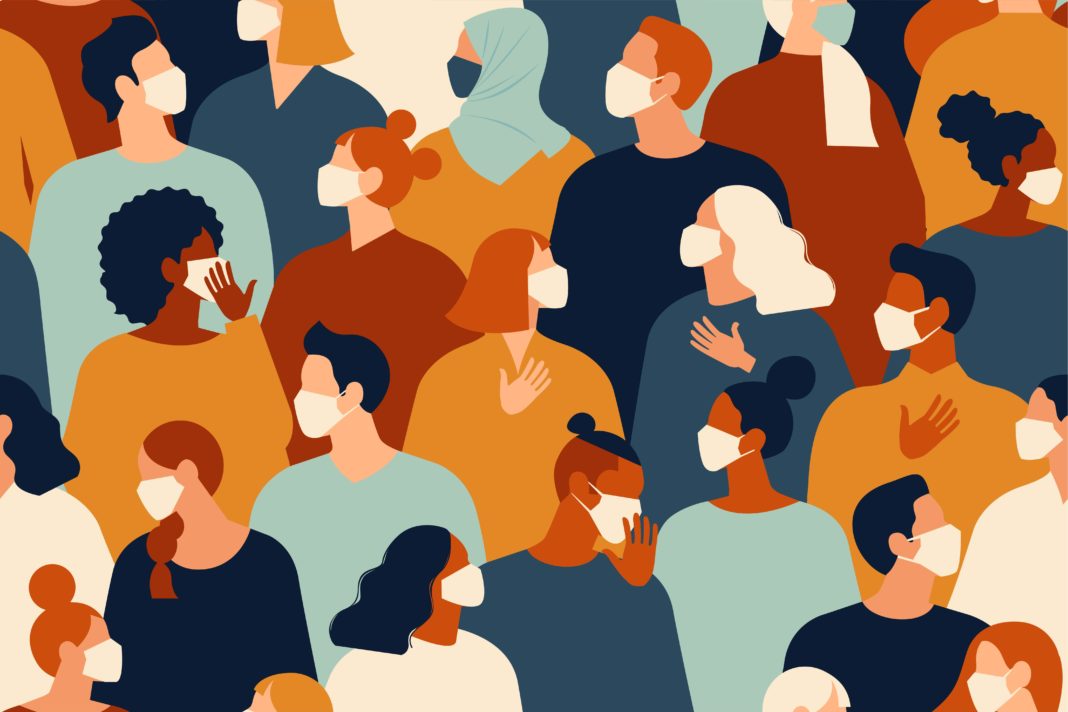[dropcap]W[/dropcap]hen America first instituted quarantine measures for the COVID-19 pandemic, almost everyone followed state and federal rules. Even in rural America. People worked from home if they could and shared space with their children and spouses. If someone had to leave the house it was for essential trips only, like picking up groceries. “Social Distancing” was regarded as crucial in order to decrease the number of COVID-19 cases and to give health care facilities more space for patients already afflicted.
But as the weeks became months and the case curves appeared to have flattened, staying at home suddenly fell out of fashion. States and cities relaxed their quarantine measures and sprung back to life with large groups of people crowding restaurants, bars and beaches. Predictably, this resulted in case curves going up again. We all know this, but folks are still going out and gathering en masse. Some are wearing masks, but most of them are not.
Why is this happening?
Quarantine fatigue is the term used by mental health experts to describe this reversal. Also known as caution fatigue, quarantine fatigue starts once a significant period of time has passed since the triggering event or scare. “It’s reflected when we become impatient with warnings, or we don’t believe the warnings to be real or relevant, or we de-emphasize the actual risk,” said Jacqueline Gollan, a professor at the Northwestern University Feinberg School of Medicine, in an article for CNN. “And in doing that, we then bend rules or stop safety behaviors like washing hands, wearing masks and social distancing.”
According to a March 2020 poll by the Kaiser Family Foundation, 45% of those surveyed said the pandemic has hurt their mental health. The sudden rush to isolate millions of people, combined with the closing of venues and postponing of public events, has left many Americans hungry for any kind of social interaction and a return to normalcy. That leads some to disregard the pandemic, even if it means risking their own health or the health of others.
While it would be easy to shame those who seem to be flouting the advice of experts, Dr. Julia Marcus, an epidemiologist at Harvard Medical School, recently told The Atlantic that shaming those who go out during a pandemic is probably not the best idea. “Americans can accept that, despite our best efforts, some people will choose to engage in higher-risk activities—and instead of shaming them, we can provide them with tools to reduce any potential harms,” she wrote. “Want to see your grandkids? Still planning to have that party? Meet up outside. Don’t share food or drinks. Wear masks. Keep your hands clean. And stay home if you’re sick.”
With the 4th of July fast approaching, some communities may find it difficult to practice the proper social distancing techniques while celebrating. Public health experts agree that the risk of transmission is significantly reduced if you plan on being outdoors, but crowded areas like clubs and restaurants are considered hotspots for the coronavirus. The best course of action, if you want to leave the house and decrease the transmission risk, is to simply follow the CDC guidelines. Wear a mask in public when indoors, wash your hands periodically, and practice social distancing everywhere, even outdoors.
And if these strategies aren’t enough to overcome your quarantine fatigue, practice a little self-care. Take a step back and figure out how you personally perceive risk and reward. Is going into a Target without a mask worth the risk if it also means possibly infecting your loved ones? Is it worth the reward of celebrating on a crowded beach if the risk includes sharing space with strangers who may or may not have COVID-19 and who may or may not particularly care if you catch it?
A large part of why we shame those who crowd the patios of reopened brunch spots is that it gives us the illusion of some level of control. Every day we are bombarded with information about the coronavirus, and with fears of unemployment and a struggling economy looming over us, it can be cathartic to look upon those who refuse to wear a mask and laugh at their obvious stupidity while secretly wishing we could have bottomless mimosas with the girls, too. But it doesn’t really help us in the long run. What we can do is prioritize our own health and the health of those around us.
Shifting our risk/reward mindset into discovering how to be “normal,” with extra steps to safeguard our health, is one way we can successfully beat quarantine fatigue. And when we finally do return to normal, when we can stop looking askance at that one guy who coughed near the produce, we can look back and take pride in the fact that we took the steps necessary to protect ourselves and those we care about.





